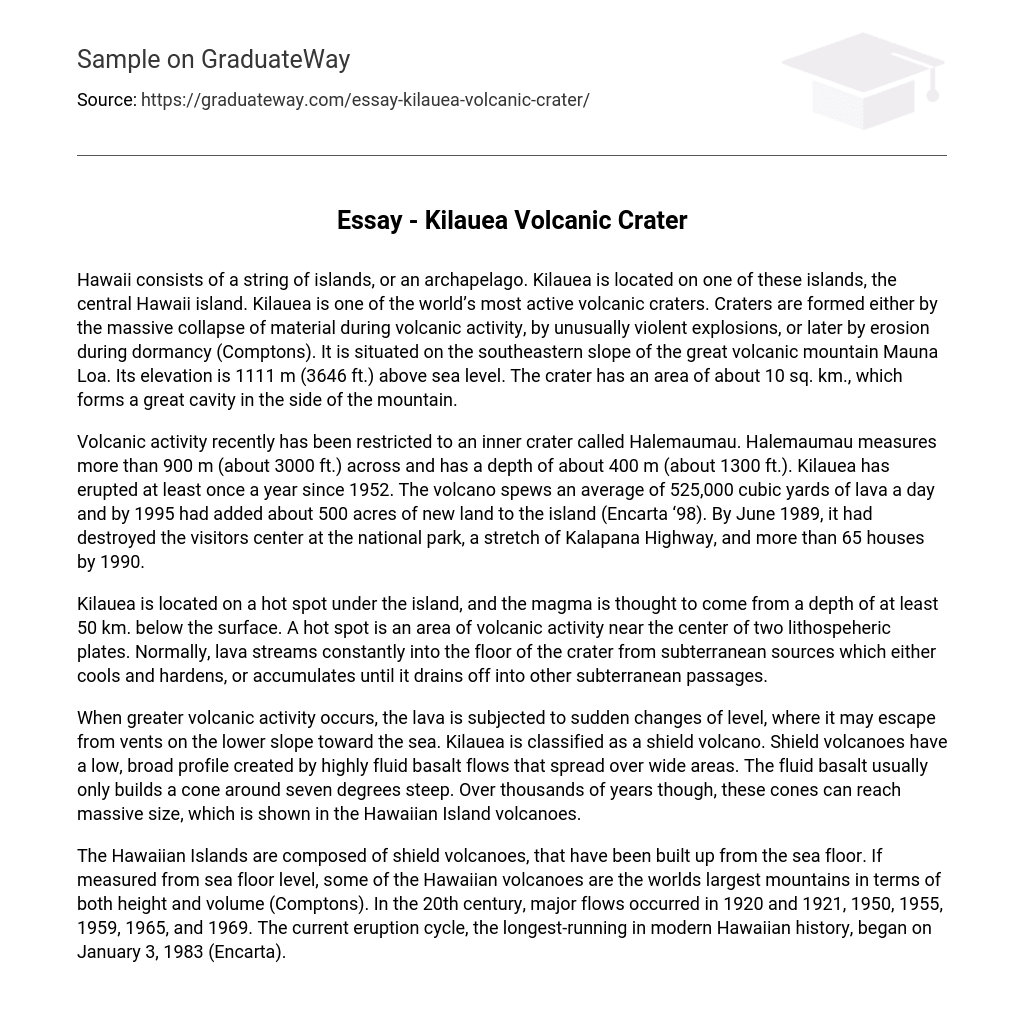The state of Hawaii is composed of multiple islands that form an archipelago. Within this group of islands lies central Hawaii, which includes the highly active volcanic crater named Kilauea. Kilauea is widely recognized for its frequent volcanic activity and is regarded as one of the most active craters globally (Comptons). Craters like Kilauea are formed through diverse processes such as material collapses during volcanic eruptions, violent explosions, or erosion during periods without activity. Positioned on the southeastern slope of Mauna Loa, a colossal volcanic mountain, Kilauea stands at an elevation of 1111 m (3646 ft.) above sea level. The crater spans about 10 sq. km., generating a notable cavity on the side of the mountain.
The recent volcanic activity has been contained within Halemaumau, a central crater that is more than 900 m (about 3000 ft.) wide and approximately 400 m (about 1300 ft.) deep. Since 1952, Kilauea has experienced eruptions at least once every year. On average, the volcano releases about 525,000 cubic yards of lava daily and by 1995, it had added around 500 acres of new land to the island (Encarta ‘98). As of June 1989, it had destroyed the visitors center of the national park, a section of Kalapana Highway, and over 65 houses by 1990.
Kilauea is situated on a hot spot beneath the island, with magma believed to originate from a depth of at least 50 km beneath the surface. A hot spot refers to a volcanic area near the center of two lithospheric plates. Usually, lava continuously flows into the crater floor from underground sources. It either cools and solidifies or builds up until it eventually flows into other underground passages.
Increased volcanic activity can cause rapid elevation changes in lava, which may then be released through vents on the lower slope towards the sea. Kilauea is classified as a shield volcano, known for its wide and low profile that is formed by highly fluid basalt flows spreading across extensive regions. Normally, these basalt flows create a cone with a gentle slope of about seven degrees. However, over time, these cones can grow to be exceptionally large, as seen in the Hawaiian Islands’ volcanoes.
The Hawaiian Islands consist of shield volcanoes originating from the ocean floor. According to Comptons, certain Hawaiian volcanoes are the tallest and largest when measured from the sea floor in terms of height and volume. Encarta mentions significant volcanic activity occurring in 1920, 1921, 1950, 1955, 1959, 1965, and 1969 throughout the 20th century. Additionally, Encarta notes that the ongoing eruption cycle that began on January 3, 1983 is the longest recorded eruption period in modern Hawaiian history.





